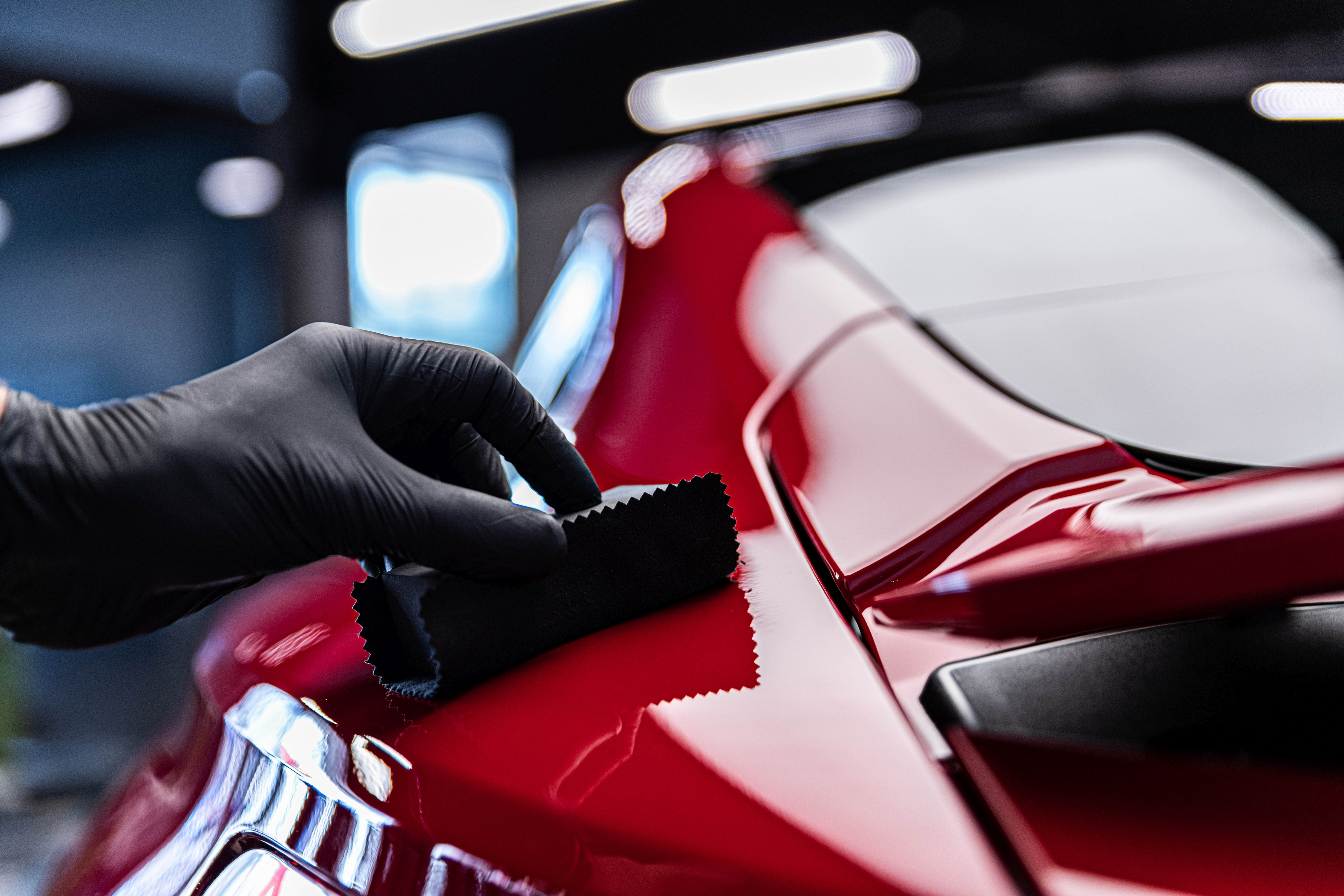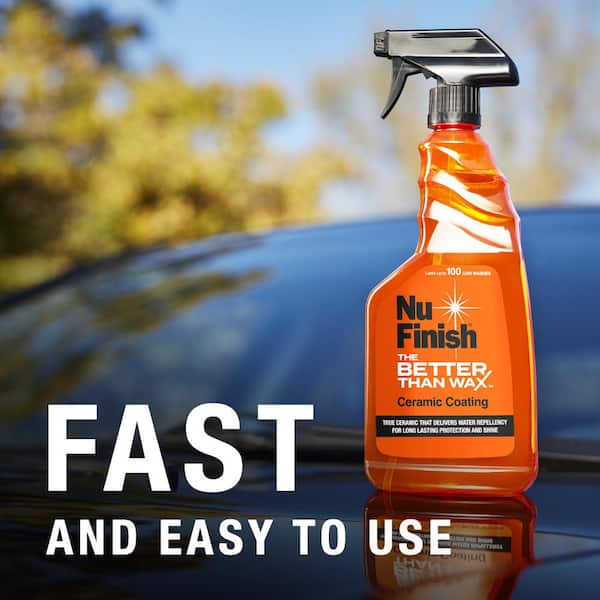Exactly How Ceramic Layer Supplies Resilient Protection Against the Aspects
Ceramic covering has emerged as a powerful option for guarding surfaces versus varied environmental obstacles. The hydrophobic attributes of ceramic covering better add to its efficacy by warding off water and lessening dust build-up.
What Is Ceramic Coating?
Ceramic covering is an innovative protective option that enhances the longevity and look of surfaces, particularly in automotive applications. This innovative modern technology includes a liquid polymer that chemically bonds with the factory paint of a vehicle, creating a protective layer that is considerably more resistant than standard wax or sealers.
Developed to supply lasting protection versus environmental contaminants, ceramic coatings are resistant to UV rays, chemical discolorations, and minor abrasions. This defense aids preserve the automobile's aesthetic appeal in time, avoiding oxidation and fading that can arise from long term direct exposure to the elements.
Furthermore, ceramic coverings are hydrophobic, indicating they ward off water and various other liquids, which helps in the avoidance of dust and grime build-up. This residential property not just makes cleansing simpler yet likewise contributes to maintaining the car's shine.
Offered in numerous formulations, ceramic coatings can deal with different surface area materials, consisting of glass and steel, broadening their applicability past just automotive usages. Overall, the fostering of ceramic covering modern technology stands for a substantial development in surface defense, providing an effective option for those looking for to preserve the stability and appearance of their investments.
How Ceramic Finish Functions
The efficiency of ceramic finish hinges on its special chemical structure and application process. Made up largely of silica (SiO2) and various other innovative polymers, ceramic layers create a molecular bond with the surface area of the product they are related to, normally automotive paint. This bond forms a semi-permanent layer that works as an obstacle versus environmental pollutants.
Once applied, the covering goes through a healing procedure, which can take a number of hours to days, depending on ecological conditions. As it remedies, the layer sets and comes to be hydrophobic, meaning it wards off water and various other materials.

Benefits of Ceramic Covering
Supplying a wide variety of advantages, ceramic finishing works as a phenomenal remedy for surface area protection. Among its main advantages is its durability, offering a robust obstacle versus ecological pollutants such as dirt, UV rays, and chemical direct exposure. This durability substantially expands the lifespan of the surfaces it safeguards, minimizing the requirement for constant repair work or replacements.
Additionally, ceramic coverings improve appearances by imparting a glossy surface that maintains its shine over time. The hydrophobic properties of these finishes repel water, making it less complicated to tidy surfaces and minimizing the build-up of grime. This self-cleaning particular not just conserves time however also improves the surface's total look.
Furthermore, ceramic finishings provide resistance to scrapes and small abrasions, securing the honesty of the hidden products. This is particularly advantageous for auto applications, where keeping a pristine outside is vital for resale value.

Comparing Ceramic Finishing to Standard Methods
Often, people seek efficient services for surface area security, triggering a contrast between standard techniques and ceramic finishes such as wax or sealants. Standard choices like wax give a momentary layer of defense, commonly lasting a few weeks to a number of months, depending on ecological problems and automobile usage. While wax can improve sparkle and offer a barrier against impurities, its effectiveness diminishes promptly, requiring frequent reapplication.
On the other hand, ceramic coatings use a more durable service, developing a strong, chemically adhered layer that can sustain for a number of years. This durable security considerably decreases the requirement for regular upkeep, enabling car proprietors to delight in a consistently refined look without the headache of constant applications. Ceramic finishes are likewise more immune to UV rays, chemicals, and physical abrasions, thus providing remarkable defense versus the elements.
While conventional approaches may be extra obtainable and cheaper at first, the longevity and performance of ceramic finishings provide an engaging case for those looking for comprehensive surface security. Eventually, the choice between traditional methods and ceramic layers depends upon individual concerns, such as time, budget, and desired level of protection.
Maintenance Tips for Longevity
Understanding the distinctions between ceramic coverings and traditional approaches highlights the importance of appropriate upkeep to take full advantage of the long life of ceramic coatings. Ceramic Coating Philadelphia. To make certain the efficiency of ceramic coverings, regular care is essential
First, constantly wash the layered surface with pH-balanced car shampoos. Avoid rough materials Our site or rough chemicals, as they can break down the finishing. A gentle hand laundry with microfiber towels minimizes the danger of scrapes.
Second, consider the usage of an upkeep spray developed particularly for ceramic finishes. Ceramic Coating Philadelphia. This can enhance hydrophobic buildings and add a layer of protection, ensuring the layer remains efficient gradually
Third, prevent automated cars and truck washes that usage brushes, as they can use down the layer. Instead, select touchless cleans or hand washing whenever feasible.
Last but not least, routine examinations for any kind of signs of damage or wear are crucial. Attending to concerns promptly can avoid extra considerable damage and preserve the finish's honesty.

Verdict
In summary, ceramic finishing uses a formidable solution for shielding surfaces from environmental challenges. Through its read this one-of-a-kind structure and hydrophobic homes, it creates a resistant obstacle that resists UV rays, extreme temperature levels, and chemical stains. The benefits of ceramic finish prolong beyond simple aesthetics, substantially decreasing upkeep initiatives and boosting toughness. By contrasting it to standard protective approaches, the prevalence of ceramic finish becomes apparent, making it a recommended option for lasting surface protection.
Understanding how ceramic layers work is necessary in valuing their role in surface area defense.
Supplying a wide range of advantages, ceramic finish offers as a remarkable remedy for surface protection.Regularly, people seek effective options for surface area defense, prompting a comparison in between traditional methods and ceramic finishes such as wax or sealants.In summary, ceramic finishing provides a powerful option for securing surfaces from ecological obstacles. By comparing it to traditional protective methods, the supremacy of ceramic coating becomes evident, making it a recommended choice for durable surface area security.